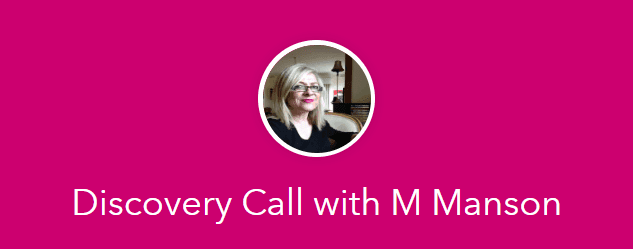 Western business society is in love with Breakthrough Innovation. It has been for the last 20 years, ever since well published gurus, like Tom Peters and Clayton Christensen, came up with the term and started showing us the aspirational, complex theories of leadership excellence and ‘innovator’s dilemma’.
Western business society is in love with Breakthrough Innovation. It has been for the last 20 years, ever since well published gurus, like Tom Peters and Clayton Christensen, came up with the term and started showing us the aspirational, complex theories of leadership excellence and ‘innovator’s dilemma’.
Defined sometimes as ‘something new to the world’; i.e. ‘something I don’t know what it is, who needs it, or how to get it, but I know that if we get it, we will be rich’.
Often it is deceptively disguised by the thick curtain of technology that few understand and the ‘uninitiated’ fear, just like our forefathers feared otherwise natural phenomena they couldn’t explain.
Breakthrough Innovation conjures images of a brave new world that holds all the promises. In comparison, the small ‘i’, incremental innovation seems trivial and is often dismissed as a mere improvement. This glorification of ‘breakthrough’ innovation creates three types of attitudes:
- We are already innovating – we are developing new products, investing in technology or lean, or, the classic: we are doing a restructure and are investing in change management;
- We have a great, innovative product, but we need funds to commercialize it; and,
- We can’t afford innovation – we need to get more sales first.
All three attitudes are very wrong to the future of a business that adopts them. AND, they are based on a myth.
Innovation is not about ‘breakthrough’. It is about innovating to ensure ongoing sustainability of business: SUSTAINABLE innovation for SUSTAINABLE business.
 Sustainable innovation comes from how hard the whole organisation is able to push solving a relevant, unmet need of a market. It often leads to the entire market being re-engineered, creating one that is either bigger or more profitable.
Sustainable innovation comes from how hard the whole organisation is able to push solving a relevant, unmet need of a market. It often leads to the entire market being re-engineered, creating one that is either bigger or more profitable.
Let me ask you a question my friend, Amnon Levav, CEO of SIT once posed at InnoFuture conference: “Was the invention of shampoo, which is nothing other than liquid soap, an incremental or breakthrough innovation?” After all, it changed the market habits and created a whole new industry.
It was a trick question. The answer is No.
To clarify it let’s take the example of Apple i-Phone. Breakthrough innovation? Yes. Why? Because, unlike the shampoo example, Apple had an advantage in several areas of activities, and their ‘innovation met these 3 market-related Criteria:
- Relevance: The solution delivers value that is important to the Customers.
- Difficulty of Imitation or Substitution: You have a unique position, based on unique Activities, that allows you to defend your position and gain further advantage in price, cost, and customer loyalty.
- Breadth of Application: One or a more of your unique Activities can be applied in other markets or to solve other customer problems. In case of Apple it was the platform – iTunes and apps – that uniquely connected other producers and industries, creating support for the physical product, the iPhone.
The multimillion dollar question is: Is it Sustainable?
Of course there is no such thing as a ‘perfect mousetrap’ and, as the ‘breakthrough’ is beginning to fray around the edges, Apple, like every other business needs to consistently defend its competitive advantage.
And, this is the crux of innovation: to defend your Competitive Advantage. Every organisation needs to have an edge over alternative customer choices – the sharper the better. Look to people’s needs where your Activities form an adaptable PLATFORM; and look what you can DO, in the most cost-effective way, that will meet these needs by ticking above there criteria.
Remember, it’s not what you HAVE, e.g. core competencies, but what you DO differently, how you solve customers’ problems, collectively as an organisation, that matters. DIFFERENTIATION IN ACTIVITIES is the real source of your Competitive Advantage and your ‘renewable’ licence to operate. To effectively focus on these activities, all employees, all functions, need to understand how they can contribute to continually improving these special Activities!
Organisations often think they are more differentiated and more relevant to the market than they really are. As a result they lose focus and become uncompetitive [Nokia, Kodak, Blackberry, etc.].
An organisation is in the strongest position when it has a SET of UNIQUE ACTIVITIES that directly support the Vision; are strategically anchored in the Mission, mutually exclusive and mutually reinforcing.
 InnoFuture provides innovative business culture transformation services to progressive, Small-Medium organisations. Sign up for our In-Crowd list to connect to the local and global innovation though leadership. Or, attend our EVENTS: InnoFuture RIOT is a program of Rapid Insight Online Talks where we share insights on Business Culture | Branding | Innovation.
InnoFuture provides innovative business culture transformation services to progressive, Small-Medium organisations. Sign up for our In-Crowd list to connect to the local and global innovation though leadership. Or, attend our EVENTS: InnoFuture RIOT is a program of Rapid Insight Online Talks where we share insights on Business Culture | Branding | Innovation.
For for urgent help contact us and take the 1st step to making your organization be more focused, more differentiating and more competitive.


